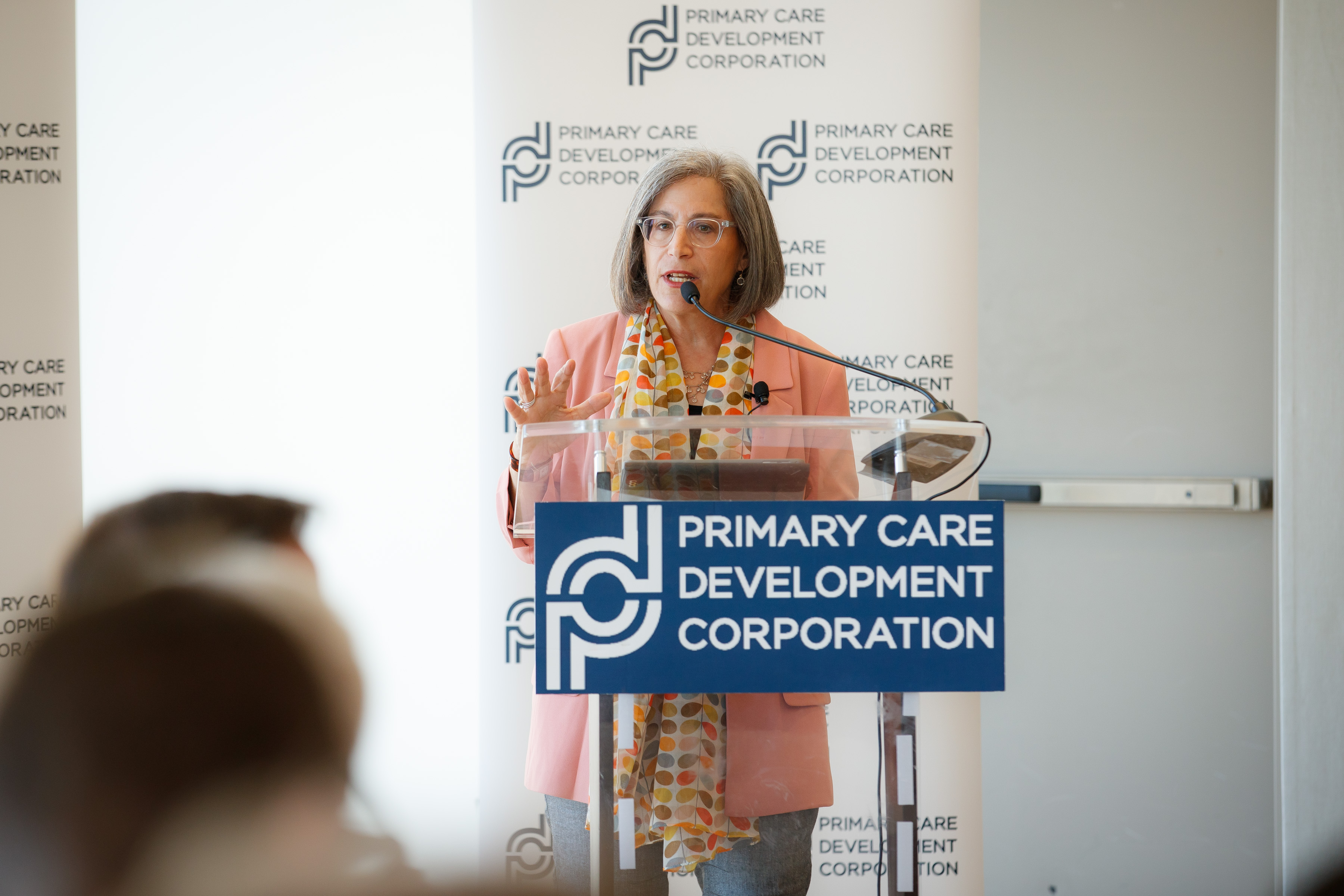‘Creating the System We Know We Need’: Primary Care Summit Recap


“COVID-19 has strained our health care resources,” PCDC CEO Louise Cohen [below] said at the Primary Care Summit. “It’s stretched our provider community and shined a bright light on the U.S. health care system — both its strengths and weaknesses.”
 Cohen’s comments framed a larger discussion on health care spending, an issue brought into stark relief by the pandemic.
Cohen’s comments framed a larger discussion on health care spending, an issue brought into stark relief by the pandemic.
Experts from Oregon, Delaware and Rhode Island — three pioneering states in primary care investment — offered insight on past strategies and next steps.
Read excerpts below from the livecast.
[Text has been edited and condensed.]
________________________________________
This is a moment when we need a system that’s rooted in primary care, has highly functioning hospitals, and collaborates closely with public health.
Our primary care providers who provide first-contact, collaborative, comprehensive, and coordinated care are working so hard, but without essential supports. The people are amazing, but the system — much less so.
We need timely guidance on what primary care should be doing, how best to protect providers and patients, and how to bill for it. Primary care providers are the last in line for personal protective equipment. They have been struggling to move quickly to telemedicine so that they continue to see their patients and get reimbursed appropriately for it. They need funding — now and beyond the pandemic.
Primary care has never had money for emergency preparedness, and we’re seeing the effects. The bigger sites have been able to adapt more quickly, but smaller provider offices are struggling.
Continued disinvestment and underinvestment in primary care will only result in further strains on our now weakened health care system — and will weaken our country’s ability to address and manage future threats.
At that same time, there’s no national definition of primary care, which prevents us from measuring how much investment there actually is in primary care, either at the national or state levels. What we do know is that primary care gets about 3 to 7 cents on the national health care dollar, depending on the payer.
It’s important to advocate for defining, measuring, and increasing primary care investment as a critical first step in creating the health care system we know we need.
Transparency matters. We need to do this grounded in data. We need to have an agreement on our goal. And we need to have accountability and enforcement.
 Steven M. Costantino
Steven M. CostantinoDelaware embarked on creating benchmarks for health care spending and quality after Massachusetts did. It meant basically measuring the overall spend of health care versus the economic growth of the state, and then developing the benchmark. This created a sense of transparency.
The benchmark was really a governor’s initiative. The primary care collaborative moment was more of a legislative initiative. The two meshed well together.
What we did first is figure out what we didn’t know. We looked at Oregon and Rhode Island. We had people come in and present on how they did it. That was extremely important.
We defined what primary care was, and that really was the context on which this movement has begun.
Mostly everyone supports investment in primary care. The issue is how states determine what levers to pay for it. For example, Rhode Island had the Health Insurance Commissioner. Vermont has the Green Mountain Care board. Maryland has global budgets. But I think there are models of regulation [everywhere] that can drive efforts.
Questions to ask: Will you take it from the hospital spend? Will it be additive? Will you change the delivery system in a way that it will automatically generate savings? Those are the pressure points that make this very hard work. Engagement with stakeholders obviously is the key.
You need full buy-in from top leadership at the legislative and executive levels, which our health commissioner [Dr. Kara Walker] is leading efforts to monitor.
 Chris DeMars
Chris DeMarsCoordinated primary care has been foundational to Oregon’s broader health system transformation efforts. We’ve been reforming our system, especially Medicaid, for decades now.
Primary care, the Patient-Centered Primary Care Home program, and more — it’s all a foundational effort to our health system transformation efforts. And it’s been very successful.
On a simplistic level, there are metrics associated with our coordinated care organizations: If they achieve certain benchmarks, they’re financially rewarded.
There’ve also been four primary-care spend reports from 2016 to 2020, providing new and valuable data.
The cost growth target that we’re now implementing is also a unifying goal for discussing how we can meet goals together.
Related to that is the value-based payment work in the larger collaborative. We know we all need to move to value-based payment. How are we going to do that together? Who needs to give up what? What should our state roadmap be in order to achieve our cost target and to move away from fee-for-service and value-based payments?
To achieve the rebalance, you must include various stakeholders in the legislation.
 Christopher F. Koller
Christopher F. KollerThe focus on the primary-care spend requirement works well because it’s simple — people can understand it. It has tangible effects. And we’re talking about [saving] money. That’s an enormous leverage for primary care.
It takes leadership. It takes some oversight, where it’s not a conversation dominated by the hospitals or pharma. It’s about something that we know improves population health yet isn’t seeing investment.
The lessons from Oregon are important. It’s relatively easy to get legislation or a report that focuses on spend; you can get it done voluntarily. But, so what? It’s important for folks who are working on this to think about the “so what” factor — which should either be an increase or an oversight process to look at the measures and drum up attention.
Fundamentally we’re dealing with both a political failure and a market failure. On the political side, we see an undervalued primary care because of the way that Medicare sets rates. And on the private sector side, we’re dealing with private negotiated rates.
I’ve yet to meet a health plan that, if the budget were fixed, wouldn’t want to give more of it to primary care. They just feel constrained because there are other bigger mouths that they have to feed.
I would also advise that legislation be clear about the purpose. Is it about the health of primary care in particular? Is it about payment reform? Is it about transformation activities?
It stands to reason that if we can put more money into primary care, we’re also going to make it more attractive for providers to work in those settings.
We want to put more money into primary care so we have a strong, robust, basic delivery system precisely for moments like now, with COVID-19, when we need to respond in a systematic way.